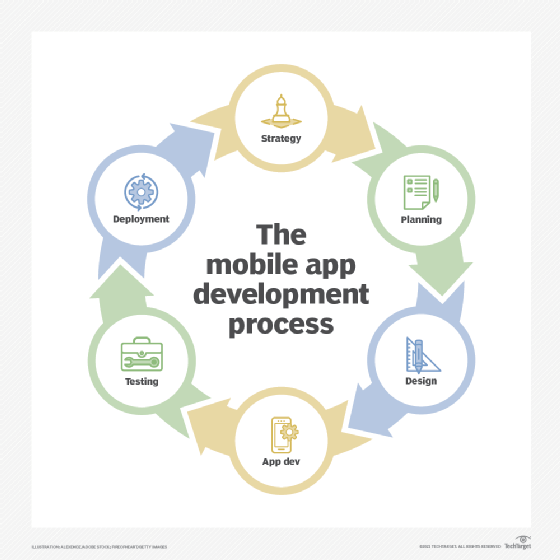mobile UI (mobile user interface)
What is a mobile UI (mobile user interface)?
A mobile UI (mobile user interface) is the graphical and usually touch-sensitive display on a mobile device, such as a smartphone or tablet, that allows the user to interact with the device's apps, features, content and functions.
Mobile UI design requirements are significantly different from those for desktop computers. The smaller screen size and touchscreen controls create special considerations in UI design to ensure usability, readability and consistency. In a mobile interface, developers can use symbols more extensively, and controls can be automatically hidden until accessed. The symbols themselves must also be smaller, and there is not enough room for text labels on everything, which can cause confusion.
Users have to be able to understand a command icon and its meaning, whether through legible text or comprehensible graphical representation. Basic guidelines for mobile interface design are consistent across modern mobile operating systems (OSes).

Mobile UI design best practices include the following:
- The layout of the information, commands and content in an app should echo those of the OS in placement, composition and colors. While apps can diverge to some degree in style, consistency on most of these points allows users to intuit or at least quickly learn how to use an interface.
- Click points must be usable for touch-based selection with a finger. This means a click point can't be too small or narrow in any direction, to avoid unwanted selection of nearby items.
- Maximize the content window size. On small screens, the UI should not unnecessarily dominate screen size. It's important to recognize that the object of a UI is to facilitate use of content and apps, not just use of the interface.
- The number of controls or commands displayed at any given time should be appropriate to avoid overwhelming the user or making viewing and interacting with content confusing.
It can be challenging to strike a balance between attending to design considerations and dealing with the specific requirements of different apps. Furthermore, an application's UI should be customized for each mobile OS, as that is the visual language the device user will be immersed in and typically most familiar with. To that end, mobile OS developers generally provide resources to familiarize UI designers with the way the OS interface functions.






